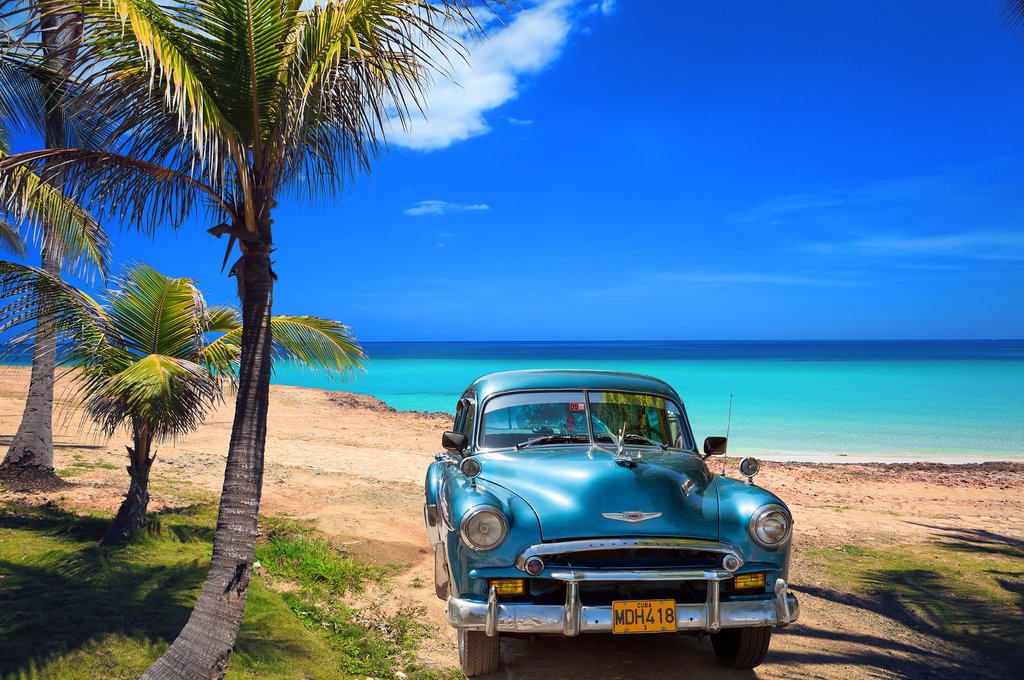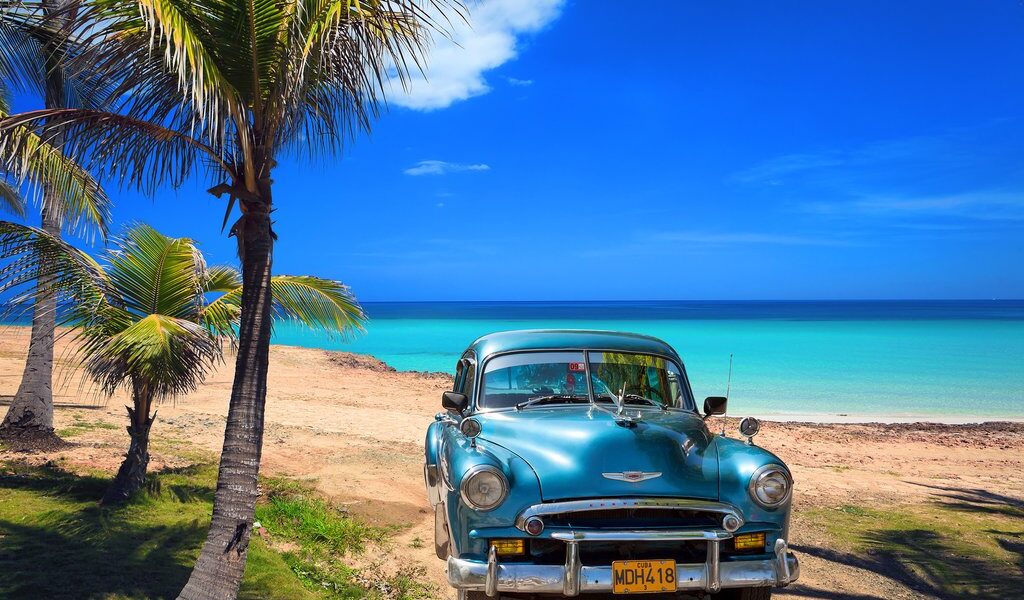
Cuba is a great destination at any time of year, but the best season to visit depends on your travel priorities. Whether you plan to bask in the warmth of a beach vacation, immerse yourself in the annual four-day jazz festival, or head deep into coffee country, you’ll want to learn more about Cuba’s seasonal offerings before planning your trip.
## Delving into the Rhythms of Cuba: A Comprehensive Guide to Planning Your Visit
Embarking on a journey to the captivating island nation of Cuba requires careful consideration, especially concerning the distinct seasonal weather patterns that shape its landscape and influence the travel experience. Cuba boasts a tropical climate, and its diverse terrain contributes to significant fluctuations in temperature and rainfall throughout the year. It is important to note that while daylight hours remain relatively consistent, the overall weather picture can shift dramatically depending on the time of year and specific location.
Spanning almost 800 miles from east to west, the island of Cuba finds itself situated at the confluence of both the Atlantic and Caribbean climate zones. This unique positioning creates localized weather variations. As frigid winter fronts descend from Canada, bringing icy conditions to Florida, Havana experiences the immediate impact. However, simultaneously, those residing in Santiago de Cuba, located on the eastern end of the island, may still be luxuriating in the warmth of the sun.
Generally speaking, when planning your trip, expect predominantly warm, clear days during the winter months. Conversely, prepare for hot and potentially stormy weather during the summer, characterized by soaring humidity levels. The northern coastal regions tend to receive more rainfall compared to the southern coast. Specifically, the southern shores of Granma, Santiago de Cuba, and Guantánamo provinces, adorned with cacti, lie in a rain shadow, resulting in intense heat during the summer months.
Despite the fact that a significant portion of Cuba’s annual visitors opt for the seclusion of all-inclusive resorts in Varadero and the offshore cays, the peak season can bring a sense of overcrowding to Havana’s historic colonial plazas and the immensely popular UNESCO World Heritage city of Trinidad, often drawing comparisons to the bustling atmosphere of Venice. Therefore, investing time and effort in meticulously planning your itinerary can yield substantial rewards. Even implementing subtle adjustments, such as scheduling your museum visits for the opening hours, can help you avoid the throngs of tourists, thus enhancing your overall enjoyment. For those seeking a more tranquil and authentic experience, consider exploring more remote destinations such as Baracoa and Granma Province, where you can escape the crowds regardless of the season.
## Experiencing Winter’s Embrace: Cuba from November to February
These months represent the height of the tourist season in Cuba, drawing in a large number of visitors eager to experience the island’s unique charm. During the peak months of January and February, popular destinations such as Havana’s colonial plazas, the UNESCO World Heritage City of Trinidad, and the picturesque village of Viñales, nestled in the heart of Pinar del Río province’s tobacco-growing region, can feel overwhelmed, especially Havana when cruise ships dock in port. Furthermore, this period coincides with the peak season for numerous festivals, transforming Havana into a vibrant hub of celebration.
Hotel rates tend to escalate during these months, but the abundance of casas particulares, which are privately-owned bed and breakfasts, remains open year-round, offering a more economical alternative. It is highly advisable to make reservations well in advance to secure accommodations in your preferred hotels and room rentals, as well as reservations at the most sought-after paladares, which are privately-run restaurants, and for car rentals.
While winter boasts the most favorable weather conditions of the year, characterized by predominantly clear skies and warm temperatures, western Cuba is susceptible to sharp temperature drops whenever cold fronts originating from Canada move southward. These cold fronts often bring prolonged periods of rainfall, prompting visitors during these months to pack accordingly with appropriate clothing. The eastern provinces, on the other hand, are less vulnerable to such sudden and extreme weather variations.
### Winter’s Festive Calendar: Unveiling Cuba’s Seasonal Events
**Festival del Nuevo Cine Latinoamericano, Havana:** Cubans have a deep passion for cinema, to such an extent that many choose to take their annual vacation during this festival, which showcases avant-garde films from across the Americas. It should be noted that other cities also participate in the festival, expanding its reach beyond the capital.
**Festival Internacional de Música Benny More, Cienfuegos:** The southern port city of Cienfuegos erupts in a joyous celebration, honoring the legacy of the legendary composer and singer Benny More, who is revered as one of the greatest figures in Cuban music history. The festivities encompass a wide array of performances and activities that capture the essence of his musical genius.
**Procesión de los Milagros, San Antonio de las Vegas:** Held annually on December 17th, the Procesión de los Milagros stands as Cuba’s largest religious procession. Thousands of pilgrims embark on a journey, walking or even crawling, often dragging rocks tied to their ankles, to the Sanctuario de San Lázaro. There, they beseech the saint for miracles, expressing their belief in the power of his effigy to grant their wishes.
**Las Parrandas, Remedios:** This late-night celebration takes place during Christmas Week and features elaborate carnival floats and an intense firework competition that is not for the faint of heart. In fact, the pyrotechnic displays can be considered quite dangerous. It is worth mentioning that other towns and villages in Villa Clara province also host parrandas, adding to the regional festive spirit.
**Festival Internacional de Jazz, Havana:** This four-day festival showcases both top-name Cuban and international jazz musicians at various venues throughout the capital city. The event provides a platform for diverse jazz styles and attracts music enthusiasts from around the world.
**Habanos Festival, Havana:** VIPs and cigar aficionados from far and wide converge on Havana for Cuba’s premier cigar festival. The culmination of the festival is an exclusive, invitation-only gala night held at the iconic Tropicana cabaret. The event celebrates the art of cigar making and the rich cultural heritage associated with Cuban cigars.
## Spring Awakening: Cuba from March to May
As March arrives, Cuba gradually begins to warm up, with temperatures steadily increasing as the season progresses. By May, the likelihood of prolonged afternoon downpours becomes more significant. However, the western provinces typically experience a prolonged dry spell, locally known as “la seca,” which extends throughout April, resulting in relatively minimal rainfall.
During this time of year, the eastern provinces, especially the cities of Santiago de Cuba and Guantánamo, experience considerably hotter temperatures compared to Havana and the western provinces. March is still considered part of the high season, and popular destinations such as Havana, Trinidad, and Viñales continue to draw in large crowds of tourists. For travelers with an interest in Cuban culture, the resurgence of Catholicism in recent years has led to several cities hosting elaborate Easter celebrations complete with religious processions.
### Springtime Festivities: Immersing Yourself in Cuba’s Cultural Scene
**Festival Internacional del Tambor, Havana:** The International Percussion Festival is a vibrant showcase of popular music activities, highlighting the rich and diverse world of percussion instruments and their role in Cuban music.
**Festival Internacional del Cine Pobre, Gibara:** The historic port town of Gibara, located in Holguín province and characterized by its windswept setting, provides an unexpected but fitting venue for the world-renowned Low-Budget Film Festival. The festival champions independent filmmaking and showcases works that demonstrate creativity and resourcefulness.
## Summer and Autumnal Hues: Cuba from June to October
The majority of Cuba’s annual rainfall occurs during the five-month “wet season,” which also coincides with the low season for tourism. While most of the rain falls in predictably heavy afternoon downpours following sunny mornings, there is also the possibility of long-lasting storms that can linger for days. This period also marks the hurricane season, although Cuba is struck by a hurricane on average only once every three years, with September being the month most prone to these storms.
During this time of year, the air becomes saturated with humidity, and even the nights can feel oppressively hot and humid. The eastern provinces are the hottest region of the country, often reaching levels of heat that can be difficult to bear. The mountainous regions of Santiago de Cuba and Guantánamo receive the highest rainfall of all, particularly around Baracoa, which is nestled amidst a lush rainforest.
Despite the challenging weather conditions, traveling during the off-season presents several notable advantages. Budget-conscious travelers will be pleased to find that lodging rates plummet, while beach hotels become more accessible to Cuban families taking advantage of discount packages. Car rentals are easier to secure during this time, and you’ll have a better chance of obtaining reservations at Havana’s most sought-after restaurants.
### Summer and Autumn Celebrations: Embracing the Spirit of the Season
**Fiesta del Caribe, Santiago de Cuba:** This week-long carnival is Cuba’s most colorful and flamboyant street parade, culminating in a cacophonous and exhilarating climax. The festival celebrates Caribbean culture through music, dance, and vibrant costumes.
**Carnaval de la Habana, Havana:** While a less grandiose version of Santiago’s spirited carnival and a more modest spectacle compared to the renowned Carnaval of Rio de Janeiro, the Carnaval de la Habana still offers a fun and engaging experience. It provides a glimpse into Cuban culture and traditions, with street performances, music, and dance.
B-673

